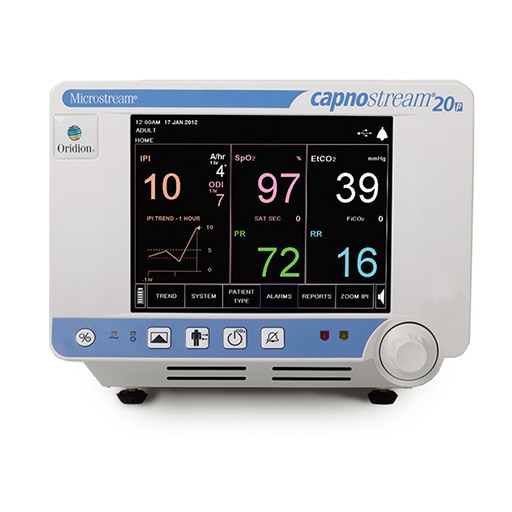Technology
The Capnostream™ 20p and the Capnostream™ 35 patient monitors with Microstream™-enabled technology includes Smart Alarm Management™ Integrated Algorithms([FOOTNOTE=ECRI Institute. The Hazards of Alarm Overload: Keeping Excessive Physiologic Monitoring Alarms from Impeding Care. ECRI Guidance Article, March 2007.],[ANCHOR=],[LINK=]),([FOOTNOTE=Hockman S, Glembot T, Niebel K. Comparison of capnography derived respiratory rate alarm frequency using the SARA algorithm versus an established nonadaptive respiratory rate alarm management algorithm in bariatric surgical patients. Resp Care (Open Forum Abstracts). 2009;12.],[ANCHOR=],[LINK=]), a suite of algorithms proven to reduce alarms and simplify the use of patient monitoring to enhance patient safety and improve clinical efficiency.







